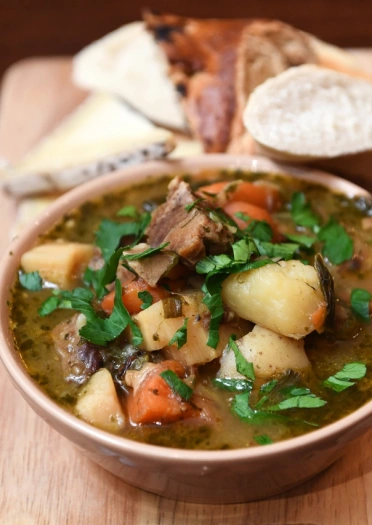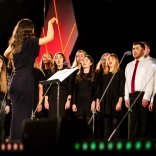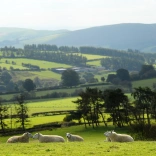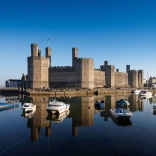Wales and France may be separated by water, but only 300 miles separate their capital cities by air. Their Celtic identities bring commonalities in language and culture, as well as business opportunities to collaborate and support each other.
Sharing produce
Both countries export and import vast quantities of goods to each other. Welsh exports to France were valued at £1.9 billion in 2020. France is Wales' second largest export destination, with the highest value sectors being transport equipment and iron and steel.
Formal business twinning
Agreements, showcases and schemes aid Franco-Welsh trade and business opportunities. The Welsh Government Office has close relationships with the Franco-British Chamber of Commerce, the French Chamber of Commerce in Great Britain and Business France UK. The Wales-France Business Forum, Le Club, launched in 2019. Approximately 80 French-owned companies are active in Wales, employing 13,000 people.
Languages
Breton (the language of Brittany, France) and Welsh are separate languages with their own alphabet, words and grammar rules. But, there are some commonalities between them. They are both of Celtic origin, so there are some similar words in the languages. For example, ‘window’ is ‘ffenestr’ in Welsh and ‘fenestr’ in Breton; ‘dog’ is ‘ci’ in Welsh and ‘ki’ in Breton.
Both Breton and Welsh languages were once attacked by the establishment. From 1880 until c.1950, French authorities banned Breton in schools. Those caught speaking it were punished. Around the same time, the Welsh Not - a piece of wood - was given to schoolchildren caught speaking Welsh to stigmatise and punish them. Thankfully this doesn’t happen anymore, and people in Wales and Brittany make great efforts to keep their languages alive.
Brittany is a priority region for Wales. The links between the two are strong. They have a Memorandum of Understanding to work together and create a joint action plan to maintain cultural links and to boost co-operation.
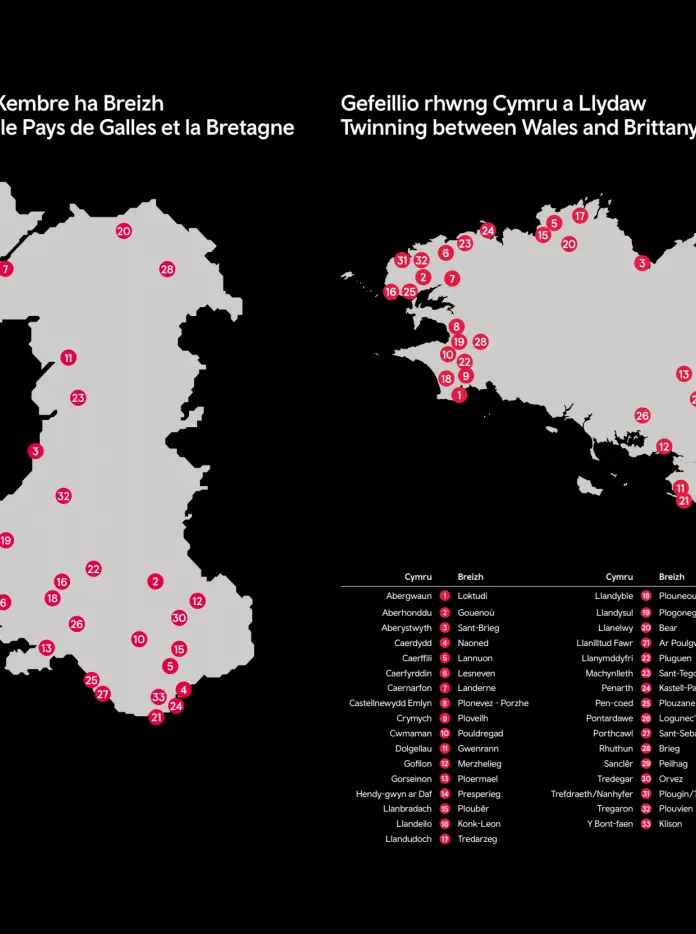
Place names
Some place names in France have Welsh origins. Saint-Malo in Brittany is named after Saint Malo, one of Brittany's seven founding saints. He's believed to have been born in Wales around 520 AD.
Some place names in Wales have French origins. Beaumaris in North Wales takes its name from a French description of its castle. The Norman-French builders who erected the castle called it ‘beaux marais’ (translating into ‘beautiful marshes’ in English). It shows that people have long moved between the two countries to live, work and study.
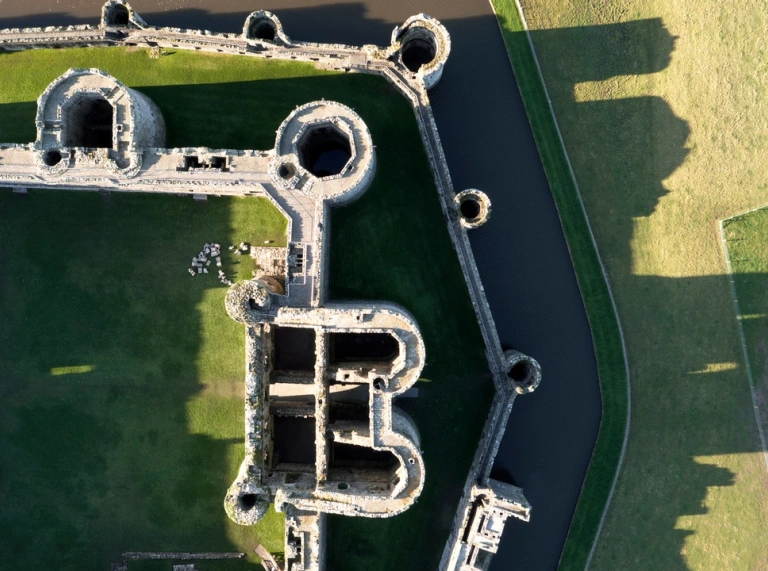
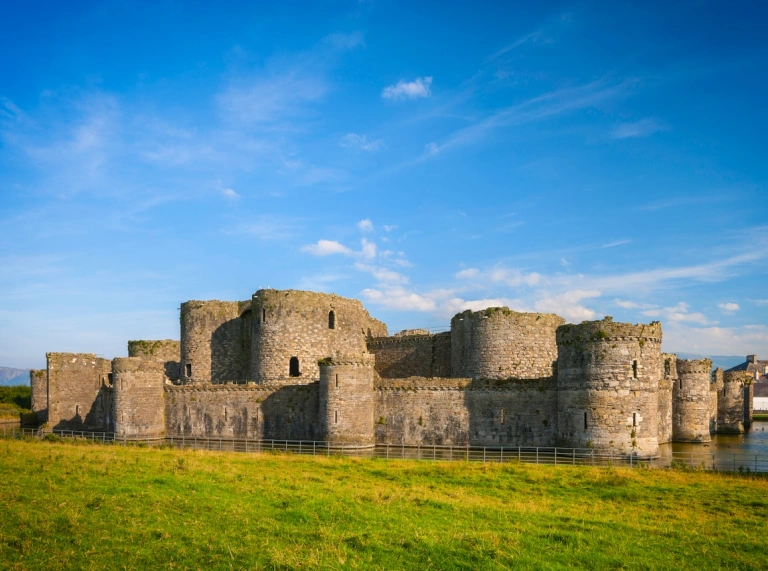
Anthems
Wales’ influence as a Land of Song is clear in Brittany's anthem. Bro Gozh ma Zadoù is based on the Welsh anthem, Hen Wlad Fy Nhadau. Both titles mean ‘Old Land of my Fathers’, and they share the same tune.
Geography
Wales and France have some similar geographical features. Both countries have mountainous regions, rivers, beaches, vast countryside and bustling cities. They also both have hundreds of castles.
Cardiff’s average temperature over the year is only 0.9℃ less than that of Paris (according to the World Meteorological Organization). Cardiff is wetter, getting nearly twice as much rainfall and 37 more rainy days than Paris.
Twinned towns, cities and communes
There are 10 twinned locations between Wales and France. They are: Cardiff and Nante; Colwyn Bay and Roissy-en-Brie; Llandudno and Wormhout; Towyn and Kinmel Bay and Guidel; Dolgellau and Guérande; Caernarfon and Landerneau; Harlech and Riec-sur-Belon; Aberffraw and Mortagne-sur-Gironde; Rhosyr and Mortagne-sur-Gironde; Neyland and Sanguinet.
Art
A great deal of cultural exchanges take place between Wales and France. Artists from France flock to Wales for inspiration and vice versa. Each country shows artworks by people from the other. The National Museum Wales in Cardiff has the largest collection of French Impressionist art outside of France, including pieces by Monet, Renoir, Sisley and Cézanne.
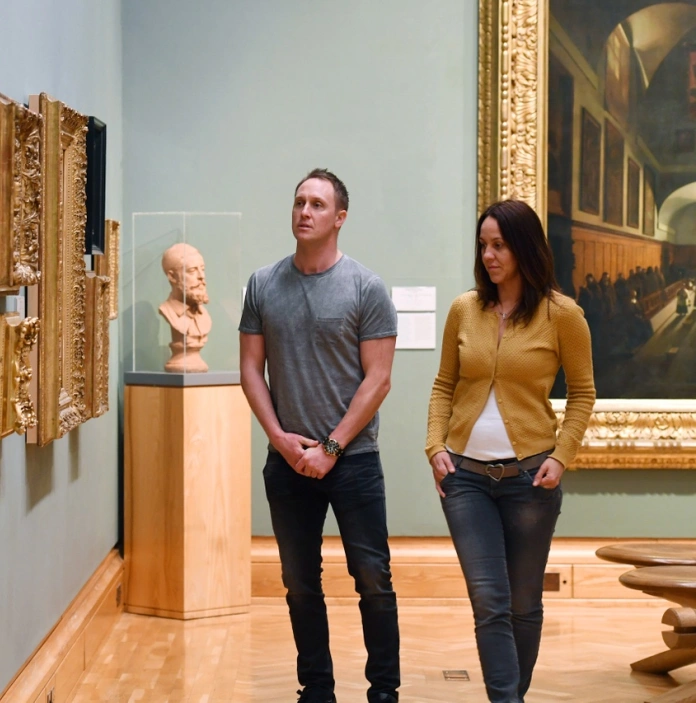
Celtic celebration
France hosts the annual 10-day Lorient Celtic Festival in August. 750,000 visitors celebrate Celtic music, culture and identity. There are mini-events including performances, parades, masterclasses and craft sessions.
Sport
Rugby union and rugby league teams in both countries have strong fan followings. Every year, Wales and France compete in the Six Nations Championship alongside teams from England, Ireland, Italy and Scotland. Elsewhere in sport, Geraint Thomas from Wales won the 2018 Tour de France and came second in 2019. Wales will also be sending athletes to the Paris Olympics in 2024.
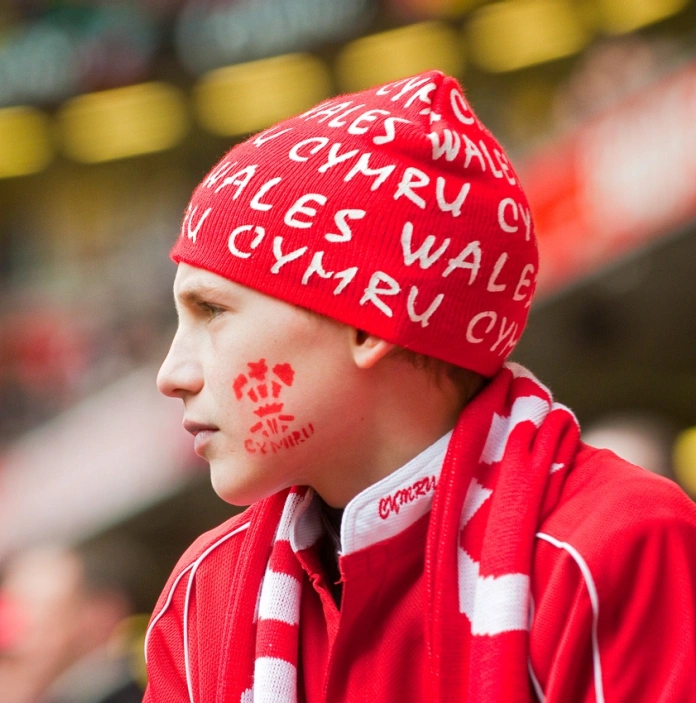
Food
There are similarities in the cuisines of Wales and France. Both countries cook using ingredients from the land. Given their similar topography, they both have access to the same types of ingredients. Both countries produce oysters, mussels, salmon, trout, crabs and lobsters, as well as world-renowned cheese.
They also have soups that were born out of poverty but have since become national dishes, namely cawl in Wales and French onion soup in France. There are vineyards, breweries and distilleries throughout both nations; you can enjoy a locally-sourced meal washed down with a locally-made drink in either country.
